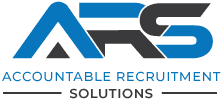A cover letter is a key component of any job application. In many cases employers will take the initial review purely based on the documents you provide. Here are a few simple steps to make sure you are on point with your application.
Step 1: Map out a business cover letter
Your cover letter showcases your personality and your grammar so make sure you include all the elements of proper business letter:-
- your name and address
- the recipient’s name, title, company and address;
- the date;
- the greeting;
- your four-paragraph body;
- your salutation; your name.
Having a saved template with all of this information in the proper formatting makes it easy for you to dash out a new cover letter at a moment’s notice.
Step 2: Build paragraph 1 with these four items
Introduce yourself- More specify what position you are applying for – use the exact title as it appears and mention a position/ job description number if there is one.
Specify how you heard about the position – this is where you mention if someone referred you. Having the name of an employee as the source is a great way to get the recruiter’s attention. Write a transitional statement that summarizes why the employer should be interested.
Step 3: Decide on your introductory hook
If you’re going for a job where academic credentials matter, you may open with your degrees – If the job requires subject matter expertise, you might open with your involvement in the industry- If you’re angling for a meeting with a specific person and you’ve identified a shared interest you might open with that. For example, I was trying to land a senior executive as the opening speaker to a conference I was organizing, and we both were active in improvisational theatre and had studied with the same teacher – I opened with that shared interest, even though the conference was business, not arts.
Step 4: Pick your two main arguments for paragraphs 2 and 3
The meat of your cover letter will be the middle two paragraphs that build the case for why the employer should consider you (remember you’re not trying to land the job in one move, just get the interview). You want a compelling but logical structure, something that enables you to pick from the best of your background and is not just a chronological retelling of your resume. Three structures I recommend:
1- Inside and outside: Focus one paragraph on your professional experience (inside the workplace) – recent jobs, specific projects, industry knowledge experience. Focus the other on academic experience or community service (outside the workplace). This structure works best if you need to lend emphasis and credibility to your experience outside of the workplace – if you’re changing careers, for example, your most relevant experience may come from a recent degree or side activities.
2- Hard and soft: Build your case around hard and soft skills. Each paragraph could draw from professional, academic, and volunteer experience but thematically you would emphasize technical skills, analysis, and/ or subject matter expertise in one section and communication skills, relationship-building, and management/ leadership potential in the other.
3- Contrasting stories: If you have two substantive projects or roles with measurable accomplishments and that showcase specific skills or expertise, write a paragraph on each one. Ideally, these stories contrast in some way – they occur at different employers so you show you are able to get results in different environments; or they showcase different types of skills (e.g., one is a growth project, another is a turnaround).
Step 5: Decide on specific details to support each argument
Once you have the structure you want, review your resume and capture which roles, projects, expertise, skills and results you want to capture. The cover letter is so much more powerful than a resume in this way. The cover letter is your chance to lead the prospective employer to exactly what information you want them to know.
Step 6: Build your closing (paragraph 4) with these three items
Summarise why the employer needs to see you. Don’t just give the generic “I am confident with my skills and experience….” Summarise the skills and summarize the experience. Yes, you just detailed it in two paragraphs, but you want to bring it all together in the close. Then thank the employer for the consideration – the words “thank you” must be somewhere in the close. Finally, end with a call to action, ideally that you will follow up in the next week but also inviting them to contact you – don’t forget to include your phone and email.
Step 7: Map your general cover letter to the job description
Now that you have the a general cover letter done, the final step is to compare the general form with the actual job description and see if there are words from the job description you want to call out in your letter. Or perhaps you have a special affinity for this company, and you want to add a line explaining your deep and genuine interest.
Finally – Good Luck!
